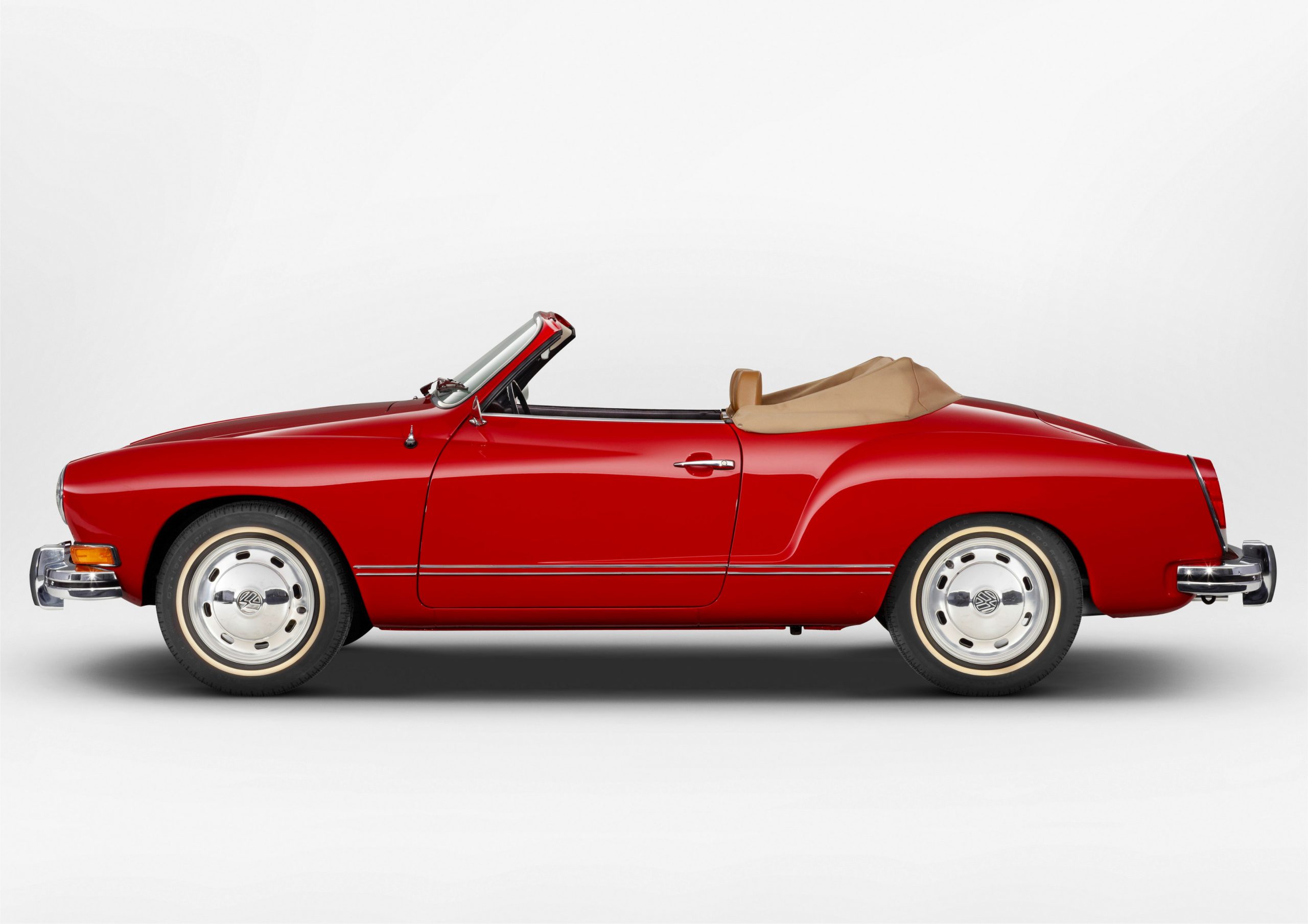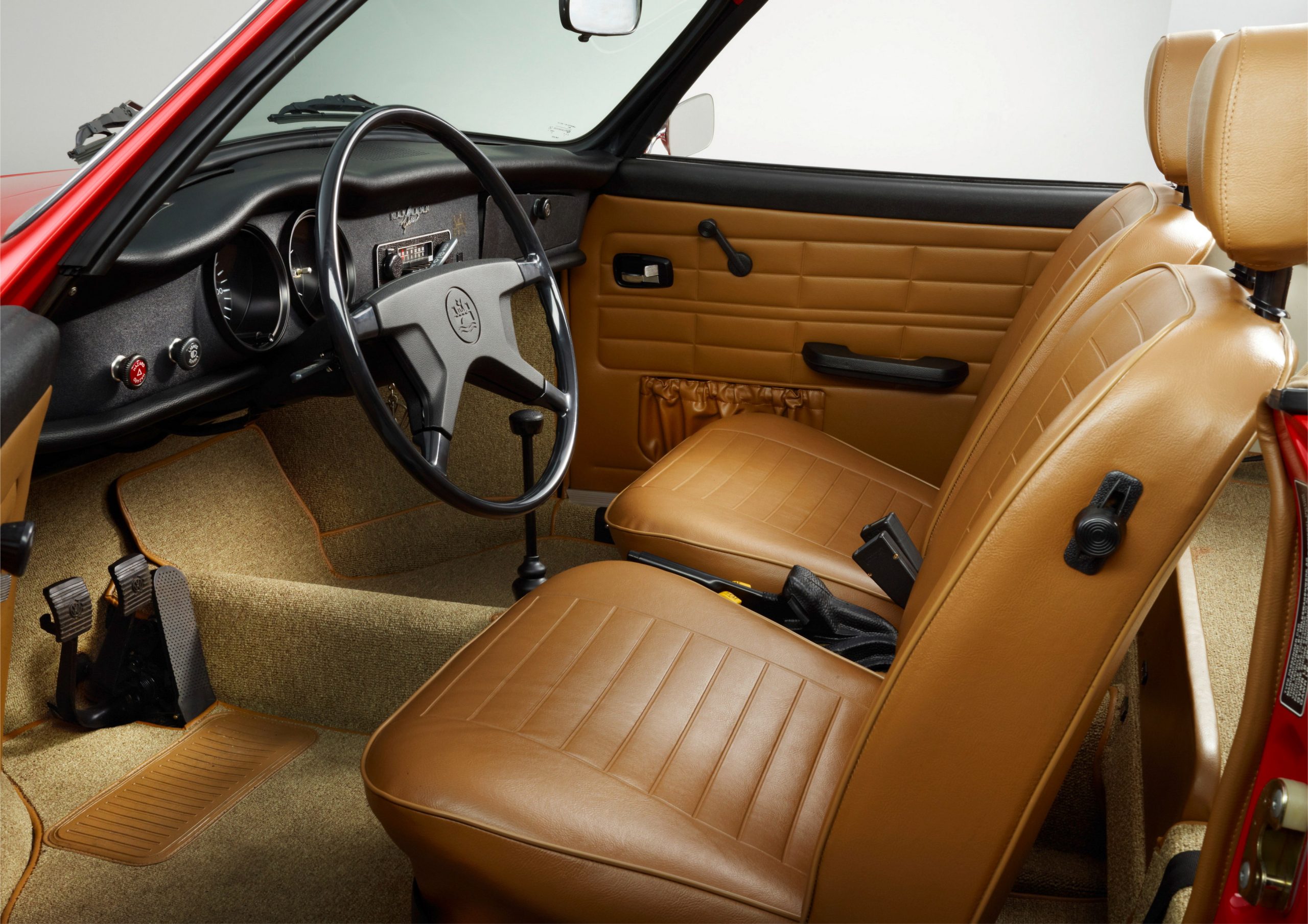The 1950s: The streets of Germany were dominated by the VW Beetle, which in turn became one of the most important symbols of the economic miracle. The car was practical and inexpensive, which favored its success just as much as its unpretentious and reliable technology. But the rational long-runner was hardly able to stir up real passion at the time. That was precisely why Volkswagen added a ravishingly beautiful offshoot to its range from 1955 onwards: the Karmann-Ghia Type 14. It was allowed to play the role that the Beetle was denied for a long time, namely that of the charming heartbreaker.
The 1950s: The streets of Germany were dominated by the VW Beetle, which in turn became one of the most important symbols of the economic miracle. The car was practical and inexpensive, which favored its success just as much as its unpretentious and reliable technology. But the rational long-runner was hardly able to stir up real passion at the time. That was precisely why Volkswagen added a ravishingly beautiful offshoot to its range from 1955 onwards: the Karmann-Ghia Type 14. It was allowed to play the role that the Beetle was denied for a long time, namely that of the charming heartbreaker.
Wilhelm Karmann and Volkswagen General Director Heinrich Nordhoff are credited with the idea of building a sports coupé based on the Beetle. The incomparable body shape was given to the two-door car by Luigi Segre, a good friend of Wilhelm Karmann. The first prototype was put on wheels in Italy by the Turin couturiers of Carrozzeria Ghia. Production started at the Karmann plant in Osnabrück on August 11, 1955. Despite the high prices – at 7500 marks, the Karmann Ghia cost more than twice as much as the standard Beetle – the coupé quickly became a bestseller, so that VW followed up two years later with a convertible variant that was at least as stylish. Nevertheless, the reputation of the Karmann-Ghia mainly profited from its sports car-like lines – technically, it always remained home cooking throughout the 19-year production period. In the rear of the two-door car, the most powerful Beetle engine in each case provided smooth propulsion without exception. Initially rated at just 30 hp (22 kW), the boxer heart then delivered 34 (1960), 40 (1965), 44 (1966) and, from 1969 until the end of production, 50 hp (25, 29, 32 and 37 kW).
Against this background, it is no wonder that the Type 14 always looked faster than it actually was – especially since the Karmann-Ghia weighed around 100 kilograms more than a Beetle. Even the most powerful version needed a whopping 21 seconds to sprint from zero to 100 km/h. The public, which was all too inclined to ridicule, was therefore quick to call the likeable VW by unpleasant terms such as “housewives’ Porsche” or even “secretaries’ Ferrari”. These taunts did nothing to dampen the popularity of the Karmann Ghia – by 1974, 385,803 coupés and 81,053 Type 14 convertibles had rolled off the production line in Osnabrück.



